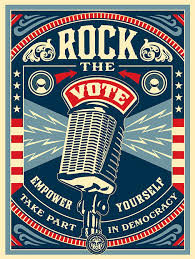Within the United States, the development of healthcare policy continues to travel a long and winding road. Although the American public might assume that the president and his advisors are the primary players in public policy, the system is far more complex. John Kingdon (2011) writes that the key roles in policy development may be evaluated by their ability to set the agenda, propose alternative solutions and promote implementation. Individuals are often not able to drive all three of these components. Kingdon (2011) continues that the president and his appointees are often the ‘agenda setters’ within policy development. These executive level roles are able to move issues up and down a continuum of importance. However, alternatives to each proposed policy may come from other areas. Elected officials might bring solutions from their constituents. Special interest groups may propose new ideas. The success and implementation of a particular policy is more often built outside of the traditional governmental agencies. In healthcare we must consider the American Medical Association, the American Nurses Association and the American Hospital Association, among others, as formidable forces in policy development.
All of the players in policy development referenced above may be considered ‘historic’ or traditional roles. And while governmental agencies generally have the final say when enacting policy, our healthcare landscape is changing. Now more than ever the individual consumer may be involved in which policy is implemented successfully in their environment. With the breadth of influence found through social media, the individual has the power to shape policy. People may now be involved in policy development from the comfort of their living room. A well-timed ‘tweet’ or Facebook post could soon flood the country with new ideas regarding health policy development. Consumer Reports is a well- respected advocate for fair and equitable solutions. They are trusted by many Americans. This organization is just one of many that have branched into the world of healthcare policy. Their affiliate Consumers Union seeks to derive policy from the research conducted for Consumer Reports. They have developed the Safe Patient Project. This work has arisen from the large amount of publicity directed at hospital acquired infections. Consider the following video:
This video has over 120,000 ‘likes’ at the time of this post- in just two months. This is just one example of many organizations outside the traditional political arena that seek to drive healthcare policy. It appears that this is the wave of the future. The healthcare industry giants have recognized that social media is a force in policy making. From local elected officials to organizations like the Centers for Disease Control, the consumer’s use of social media is having an impact on the creation and development of policy.
One organization that is a key player in the development of policy relating to palliative care is the Coalition for Compassionate Care of California (CCCC). Founded in 1998, this group seeks to advocate for patients and families suffering with serious illness. The group targets healthcare providers and state policy makers. They are currently addressing legislation related a state-wide database for POLST forms.
Although it would be easy to concede that insurance and pharmaceutical giants have the resources to set healthcare policy, the trend is toward the individual consumer. This is where policy happens. These are the people who will vote in the coming years. According to Its All Politics (Seipel, 2014), a site sponsored by National Public Radio, the upcoming generations are engaged in issues at a local level. The younger generations are particularly disheartened by ‘politics’ and choose to tackle issues from ground level rather than wait for a governmental decree. Whether we like it or not the faces of politics are changing. The nationwide Rock the Vote campaign employs Madonna and Lil Jon to lure individuals to the issues. This is the new foundation of policy making. The healthcare industry should fully engage in creating policy that reflects the values of the consumers.
Getting the public involved in policy…
Early 1900’s VS Early 2014
References
Consumers Union. (2015). Health Care. Retrieved from https://consumersunion.org/topic/health-care/
Coalition for Compassionate Care of California. (2015). Mission. Retrieved from http://coalitionccc.org/who-we-are/mission/
Kingdon, J. (2010). Agendas, Alternatives, and Public Policies, Update Edition (2nd ed.). London: Longman Publishing Group.
Seipel, A. (2014). Millennial voters are paying attention- so why don’t more vote? It’s All Politics. Retrieved from http://www.npr.org/blogs/itsallpolitics/2014/10/08/354187589/millennial-voters-are-paying-attention-so-why-don-t-more-actually-vote


